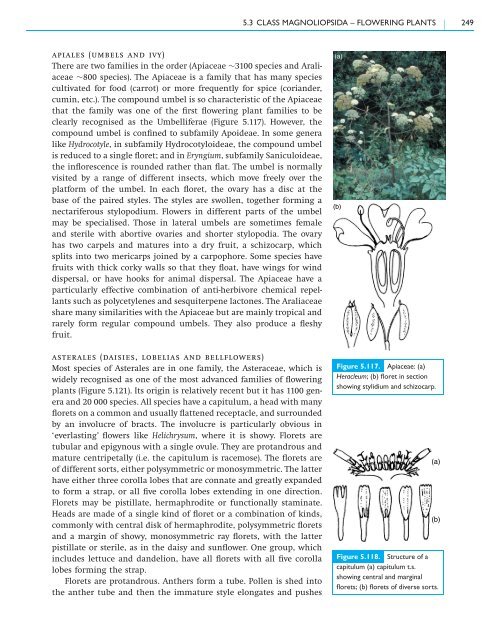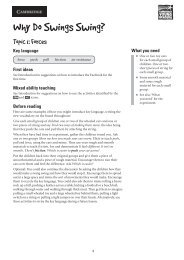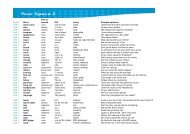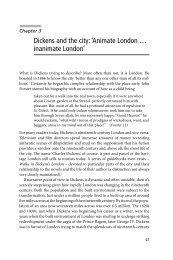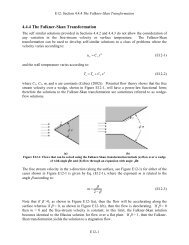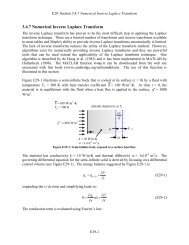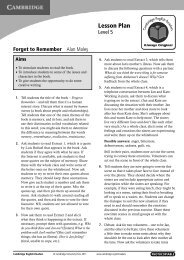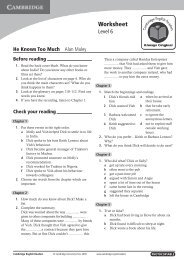5.3 Class Magnoliopsida – flowering plants - Cambridge University ...
5.3 Class Magnoliopsida – flowering plants - Cambridge University ...
5.3 Class Magnoliopsida – flowering plants - Cambridge University ...
You also want an ePaper? Increase the reach of your titles
YUMPU automatically turns print PDFs into web optimized ePapers that Google loves.
apiales (umbels and ivy)<br />
There are two families in the order (Apiaceae ∼3100 species and Araliaceae<br />
∼800 species). The Apiaceae is a family that has many species<br />
cultivated for food (carrot) or more frequently for spice (coriander,<br />
cumin, etc.). The compound umbel is so characteristic of the Apiaceae<br />
that the family was one of the first <strong>flowering</strong> plant families to be<br />
clearly recognised as the Umbelliferae (Figure 5.117). However, the<br />
compound umbel is confined to subfamily Apoideae. In some genera<br />
like Hydrocotyle, in subfamily Hydrocotyloideae, the compound umbel<br />
is reduced to a single floret; and in Eryngium, subfamily Saniculoideae,<br />
the inflorescence is rounded rather than flat. The umbel is normally<br />
visited by a range of different insects, which move freely over the<br />
platform of the umbel. In each floret, the ovary has a disc at the<br />
base of the paired styles. The styles are swollen, together forming a<br />
nectariferous stylopodium. Flowers in different parts of the umbel<br />
may be specialised. Those in lateral umbels are sometimes female<br />
and sterile with abortive ovaries and shorter stylopodia. The ovary<br />
has two carpels and matures into a dry fruit, a schizocarp, which<br />
splits into two mericarps joined by a carpophore. Some species have<br />
fruits with thick corky walls so that they float, have wings for wind<br />
dispersal, or have hooks for animal dispersal. The Apiaceae have a<br />
particularly effective combination of anti-herbivore chemical repellants<br />
such as polycetylenes and sesquiterpene lactones. The Araliaceae<br />
share many similarities with the Apiaceae but are mainly tropical and<br />
rarely form regular compound umbels. They also produce a fleshy<br />
fruit.<br />
asterales (daisies, lobelias and bellflowers)<br />
Most species of Asterales are in one family, the Asteraceae, which is<br />
widely recognised as one of the most advanced families of <strong>flowering</strong><br />
<strong>plants</strong> (Figure 5.121). Its origin is relatively recent but it has 1100 genera<br />
and 20 000 species. All species have a capitulum, a head with many<br />
florets on a common and usually flattened receptacle, and surrounded<br />
by an involucre of bracts. The involucre is particularly obvious in<br />
‘everlasting’ flowers like Helichrysum, where it is showy. Florets are<br />
tubular and epigynous with a single ovule. They are protandrous and<br />
mature centripetally (i.e. the capitulum is racemose). The florets are<br />
of different sorts, either polysymmetric or monosymmetric. The latter<br />
have either three corolla lobes that are connate and greatly expanded<br />
to form a strap, or all five corolla lobes extending in one direction.<br />
Florets may be pistillate, hermaphrodite or functionally staminate.<br />
Heads are made of a single kind of floret or a combination of kinds,<br />
commonly with central disk of hermaphrodite, polysymmetric florets<br />
and a margin of showy, monosymmetric ray florets, with the latter<br />
pistillate or sterile, as in the daisy and sunflower. One group, which<br />
includes lettuce and dandelion, have all florets with all five corolla<br />
lobes forming the strap.<br />
Florets are protandrous. Anthers form a tube. Pollen is shed into<br />
the anther tube and then the immature style elongates and pushes<br />
<strong>5.3</strong> CLASS MAGNOLIOPSIDA <strong>–</strong> FLOWERING PLANTS 249<br />
(a)<br />
(b)<br />
Figure 5.117. Apiaceae: (a)<br />
Heracleum; (b) floret in section<br />
showing stylidium and schizocarp.<br />
(a)<br />
(b)<br />
Figure 5.118. Structure of a<br />
capitulum (a) capitulum t.s.<br />
showing central and marginal<br />
florets; (b) florets of diverse sorts.


